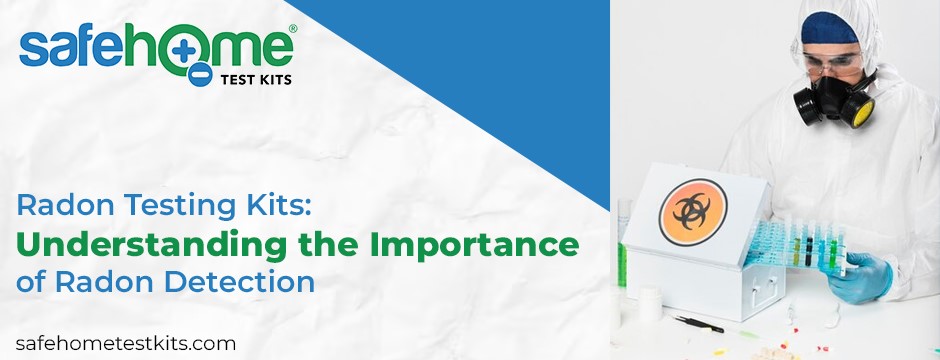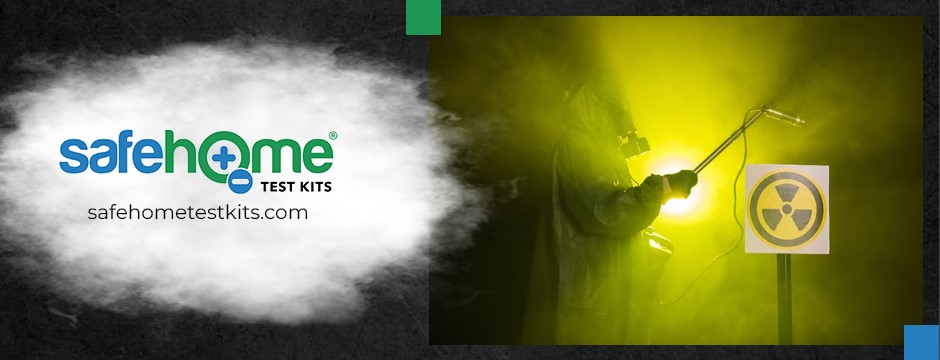Radon Testing Kits: Understanding the Importance of Radon Detection

Radon, a colorless and odorless radioactive gas, is a silent threat that could be present in homes and buildings without any noticeable signs. It is a byproduct of the natural breakdown of uranium in soil, rock, and water, and it can enter homes through the ground. Radon exposure is a serious health concern, as it is the second leading cause of lung cancer after smoking. In this blog post, we will explore the significance of radon detection and the importance of using radon testing kits to ensure the safety of your indoor environment.
The Dangers of Radon Exposure
Radon and Lung Cancer
Radon is a known carcinogen, and prolonged exposure to elevated levels of radon can significantly increase the risk of developing lung cancer. According to the U.S. Environmental Protection Agency (EPA), radon is responsible for approximately 21,000 lung cancer deaths each year in the United States. It is crucial to understand that non-smokers are also at risk, and the combination of smoking and radon exposure poses an even greater threat to respiratory health.
Symptoms of Radon Exposure
One of the insidious aspects of radon is its lack of noticeable symptoms. Unlike other indoor pollutants that may cause immediate discomfort, radon exposure often goes unnoticed until serious health issues arise. Lung cancer symptoms related to radon exposure may only become apparent in advanced stages, making early detection and prevention imperative.
The Need for Radon Testing
Understanding Radon Levels
Radon levels can vary significantly from one geographical area to another, and even homes in the same neighborhood can have different radon concentrations. It is essential for homeowners to be aware of radon levels in their specific location, as this knowledge forms the foundation for effective mitigation strategies.
Importance of Radon Testing Kits
Radon testing kits are the primary tools for assessing radon levels in indoor environments. These kits are designed to be user-friendly, allowing homeowners to conduct radon tests without the need for professional assistance. The two main types of radon gas testing kits are short-term and long-term kits, each serving a unique purpose in gauging radon exposure over different durations.
Short-Term Radon Testing Kits
Short-term radon testing kits typically operate over a period of 2 to 7 days. They provide a quick snapshot of radon levels and are ideal for initial assessments or real estate transactions. While short-term tests offer fast results, it’s essential to recognize that radon levels can fluctuate, and a short-term test may not capture the full extent of radon exposure over time.
Long-Term Radon Testing Kits
For a more comprehensive understanding of radon exposure, long-term testing kits are recommended. These kits operate for a duration of 90 days to one year, providing a more accurate representation of average radon levels. Long-term testing is especially crucial for homes with varying radon concentrations throughout the year, as it accounts for seasonal fluctuations.

Choosing the Right Radon Testing Kit
Factors to Consider
When selecting a radon testing kit, there are several factors to consider to ensure accurate and reliable results. Some key considerations include the type of kit (short-term or long-term), the cost, ease of use, and whether the kit has been validated by relevant authorities, such as the EPA. Homeowners should also be aware of the kit’s sensitivity to environmental conditions, as this can impact the accuracy of results.
Professional Radon Testing
While many radon gas testing kits are designed for homeowner use, some situations may warrant professional testing. Certified radon measurement professionals have the expertise and equipment to provide precise assessments of radon levels. Professional testing is recommended for individuals seeking a thorough evaluation or for those unsure about the accuracy of self-conducted tests.
Interpreting Radon Test Results
Understanding Radon Levels
Once the radon testing period is complete, interpreting the results is crucial for taking appropriate action. The EPA has established guidelines for radon levels, categorizing them into different zones based on the average annual radon concentration. These zones help homeowners determine the severity of radon exposure in their area and whether mitigation measures are necessary.
Taking Action
If radon test results indicate elevated levels, prompt action is necessary to reduce exposure. Radon mitigation systems, such as soil suction, ventilation, and sealing entry points, can effectively lower radon concentrations in homes. It’s essential to consult with a qualified radon mitigation professional to determine the most suitable approach for your specific circumstances.
Radon Awareness and Advocacy
Educating the Public
Increasing awareness about the dangers of radon and the importance of testing is crucial for public health. Educational initiatives, community outreach programs, and collaborations with health organizations can help disseminate information about radon exposure and encourage proactive testing among homeowners.
Regulatory Measures
Governments and regulatory bodies play a vital role in addressing radon exposure. Implementing and enforcing policies related to radon testing and mitigation in residential and commercial properties can contribute to a safer indoor environment. Supporting research on radon exposure and its health impacts is also essential for developing effective strategies to combat this pervasive threat.

Introducing Safe Home® Radon Gas Test Kit – Premium
Radon, an imperceptible threat, silently infiltrates homes, posing severe health risks. Safe Home’s Radon Gas Test Kit – Premium, priced at $14.95, is your proactive solution to safeguard your well-being. As the leading cause of lung cancer among non-smokers in the USA, radon claims over 20,000 lives annually, making diligent testing imperative.
Our Premium Test Kits are meticulously crafted to provide precise and reliable results. Each kit includes all essential supplies for hassle-free sample collection. The user-friendly process ensures that anyone can easily perform the test. Once your sample is collected and sent to our NRPP-certified lab, we take care of the rest.
Our lab adheres strictly to EPA-approved methods, maintaining NRPP certification in all 50 states. Trusted by homeowners, contractors, and home inspectors, our lab meets rigorous requirements for home inspections, mortgage approvals, and real estate transactions.
Choosing our product means receiving a Radon Gas Air Quality Test Kit (Premium grade) for a quick and accurate short-term test spanning 2 to 4 days. Enjoy a seamless experience with text and email notifications and an online certified report. We offer free professional support, guiding you every step of the way and beyond testing.
For your convenience, a modest $20 lab fee per sample can be paid online, covering the costs of standard testing and reporting services. Don’t let radon jeopardize your well-being; take proactive steps with Safe Home‘s Radon Test Kits. Your safety is our top priority.
Conclusion
Radon testing kits are indispensable tools for safeguarding the health of individuals and families. Understanding the dangers of radon exposure, the importance of accurate testing, and the significance of taking action based on test results are crucial steps toward creating a safer indoor environment. By promoting awareness, advocating for regulatory measures, and embracing the use of radon testing kits, we can collectively work towards reducing the risks associated with radon and creating healthier living spaces for everyone.


